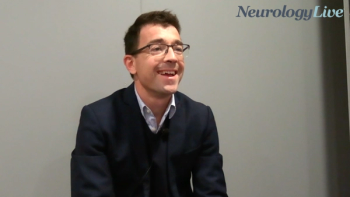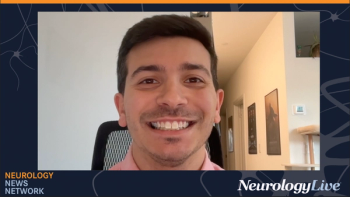
Neflamapimod Advances to Phase 3 Trial in Dementia With Lewy Bodies After Positive RewinD-LB Results
Key Takeaways
- Neflamapimod showed significant improvements in cognitive and neurodegenerative biomarkers in DLB patients, particularly with the new capsule formulation.
- The trial excluded patients with Alzheimer’s co-pathology, refining the target population for future studies.
Neflamapimod treatment led to slowing of clinical worsening, as assessed by Clinical Dementia Rating-Sum of Boxes, when drug concentrations were achieved.
CervoMed announced positive results from its phase 2b RewinD-LB trial (NCT05869669), demonstrating that the investigational agent neflamapimod significantly improved the primary outcome measure and reduced neurodegenerative biomarkers in patients with dementia with Lewy bodies (DLB). The company plans to seek FDA feedback on the design of a phase 3 trial, marking an important step forward in developing neflamapimod as a potential first disease-modifying therapy for DLB.1,2
RewinD-LB was a randomized, 16-week, double-blind, placebo-controlled trial of 159 patients with DLB, followed by an open-label, 32-week extension phase. Patients with Alzheimer disease (AD) co-pathology, as assessed by plasma phosphorylated tau (p-tau)181 levels, were excluded from the study.
In the RewinD-LB trial, two capsule batches were used: the initial “Old Capsules” (NFMD/A), which failed to reach target plasma levels, and the later “New Capsules” (NFMD/B), which achieved the desired concentrations. In the initial 16-week phase, the old capsules group showed between-group differences of –0.53 (P = 0.10; linear mixed-effects model) on Clinical Dementia Rating-Sum of Boxes (CDR-SB), the primary end point, relative to placebo. During the first 16 weeks of the extension phase, the new capsule formulation demonstrated significant improvement versus the old formulation on CDR-SB, with between group differences of –0.58 (P = .024).
"With October recognized as Lewy Body Dementia Awareness Month, we are especially proud to share these new data from our Phase 2b RewinD-LB trial,” co-principal investigator John Alam, MD, chief executive officer at CervoMed, said in a statement. “The significant improvements compared to placebo in change in CDR-SB observed in the within-subject comparison, along with correlated reductions in a key biomarker of neurodegeneration further strengthen our confidence in neflamapimod’s potential as a treatment for DLB.”
Alam added, "Together with other insights gained from Phase 2b, these results have enabled us to refine and optimize the design of our planned Phase 3 trial as we await FDA feedback later this quarter."
In RewinD-LB, the initial inclusion cutoff for plasma p-tau181 was <27.2 pg/mL, based on early estimates of optimal exclusion of AD co-pathology in DLB. Earlier this year, a large validation study (n = 1298) using the updated v2.1 assay identified 21 pg/mL as the most accurate cutoff for distinguishing patients with low likelihood of AD pathology across dementias. Following this, a sensitivity analysis using the <21 pg/mL subgroup was added to RewinD-LB’s analysis plan, and CervoMed has adopted this threshold for its upcoming Phase 3 trial, keeping the target population at roughly 50% of all DLB cases.
Within the first 16 weeks of the extension phase, the new batch of neflamapimod showed significant improvements across other scales such as ADCS-CGIC, Dementia-Cognitive Fluctuations Scale, and International Shopping List Test-Recognition. Among those with low likelihood of AD pathology who received placebo and switched to NFMD/B, there was a –0.82 point difference (95% CI, –1.33 to –0.33; P = .004) in ADCS-CGIC in the extension phase.
READ MORE:
In a time-to-progression analysis, those in the NFMD/B group demonstrated a reduced risk of clinically meaningful progression, defined as a 1.5-point increase in CDR-SB, by 67% compared with NFMD/A over 32 weeks (P <.001) and by 75% versus placebo over 16 weeks (P <.001). In addition, the second batch of neflamapimod outperformed the first batch on several domain-specific end points, including Timed Up and Go, Neuropsychological Test Battery, Dementia Cognitive Fluctuation Scale, International Shopping List Test (ISLT), ISLT Recognition, 12-item Neuropsychiatric Inventory, and Unified Parkinson Disease Rating Scale- Part III (motor).
From baseline to week 16 of the placebo-controlled phase, investigators recorded median changes of +2.0 pg/mL in glial fibrillary acidic protein (GFAP) for NFMD/A vs changes of +5.4 for those on placebo. In the extension phase, those who received batch B showed median reductions of –16.0 pg/mL after 32 weeks whereas those on the original batch remained relatively unchanged (–0.1).
When comparing NFMD/B (week 16 to week 48) vs placebo (baseline to week 16), investigators recorded a median between-group difference of –23.1 pg/mL in GFAP. Throughout the extension, the change in plasma GFAP was reportedly correlated to treatment response, assessed by CDR-SB (P = .036). Notably, the marked reductions in plasma GFAP levels confirmed preliminary findings shown in the previously completed phase 2a AscenD-LB trial (NCT04001417).
AscenD-LB, a trial of 91 patients with DLB, showed that neflamapimod significantly improved cognition, as measured by NTB, in those with mild to moderate DLB. Patients receiving the drug 3 times daily demonstrated greater cognitive gains than those on twice-daily dosing or placebo (effect size, d = 0.52; P = .015), with no discontinuations because of adverse events.3
A subsequent prespecified analysis revealed that treatment response was driven largely by patients with low baseline plasma p-tau181 levels (<2.2 pg/mL; n = 45), who showed significantly greater improvements than those above the cutoff (n = 40) across multiple measures: Attention Composite (+0.42; P = .023), CDR-SB (–0.60; P = .031), Timed Up and Go test (–3.1 s; P < .001), and ISLT-Recognition (+1.4; P = .024).4
REFERENCES
1. CervoMed Announces New Data from Phase 2b Trial Demonstrating Neflamapimod's Potential as a Treatment for Dementia with Lewy Bodies. News release. CervoMed. October 8, 2025. Accessed October 9, 2025. https://ir.cervomed.com/news-releases/news-release-details/cervomed-announces-new-data-phase-2b-trial-demonstrating?mobile=1
2. RewinD-LB Final Efficacy and Safety Results. CervoMed. October 2025. Accessed October 9, 2025. https://ir.cervomed.com/static-files/e9894fef-892f-4da6-bc0c-c817b5f57e5e
3. EIP Pharma announces positive phase 2 results for neflamapimod in mild-to-moderate dementia with Lewy bodies (DLB). News release. Boston, MA: EIP Pharma. October 6, 2020. Accessed October 9, 2025. https://www.prnewswire.com/news-releases/eip-pharma-announces-positive-phase-2-results-for-neflamapimod-in-mild-to-moderate-dementia-with-lewy-bodies-dlb-301146415.html
4. Jiang Y, Alam JJ, Gomperts SN, et al. Preclinical and randomized clinical evaluation of the p38α kinase inhibitor neflamapimod for basal forebrain cholinergic degeneration. Nat Commun. 2022;13(1):5308. Published 2022 Sep 21. doi:10.1038/s41467-022-32944-3
Newsletter
Keep your finger on the pulse of neurology—subscribe to NeurologyLive for expert interviews, new data, and breakthrough treatment updates.



































